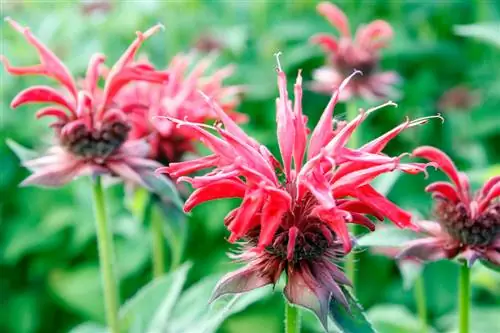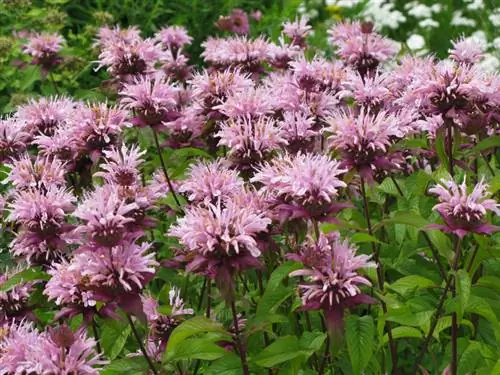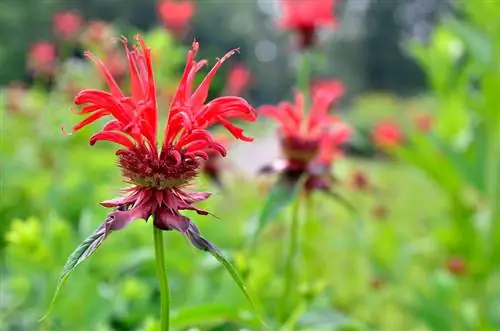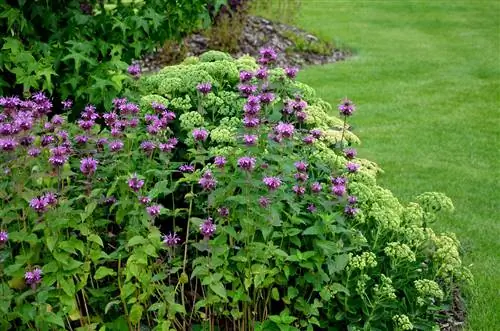- Author admin [email protected].
- Public 2023-12-16 16:46.
- Last modified 2025-01-23 11:20.
The Indian nettle is a very pretty summer perennial with colorful flowers that also requires little care. Various species are known, with Monarda didyma (“golden balm”) and Monarda fistulosa (“wild monard”) and their hybrids being particularly common. No matter which Indian nettle you are interested in, all types are completely hardy.
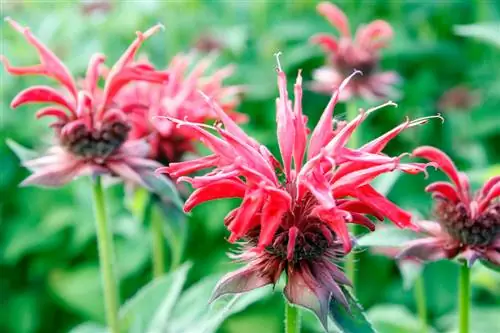
Is the Indian nettle hardy and how do you care for it?
The Indian nettle is hardy and requires little care. Depending on the species, it prefers slightly shady or dry locations and can be cut back close to the ground before winter. In spring, mature compost supports renewed sprouting and growth.
Robust Indian nettle
It is a very robust plant that is rarely attacked by pests or diseases. The only problem is powdery mildew, which typically only occurs in summer and is usually caused by a location that is too dry or too narrow. Indian nettles tolerate frosty temperatures very well, provided they are in the right location.
Choose a suitable location
The right location is essential for injury-free wintering. Depending on the species, the plants prefer slightly different places. The golden balm, for example, prefers a slightly shady, slightly moist location, although this should never be too wet. Monarda fistulosa can tolerate significantly more drought and is therefore better transplanted into more sandy soil. Be careful to avoid waterlogging with both types - this will only cause the plant to rot and die - a real danger, especially in mild but wet winters.
Preparing Indian nettle for winter
Indian nettles dry up after flowering and can therefore be cut back to just above the ground shortly before the onset of winter. Further measures to prepare for winter, such as covering with brushwood or mulching, are not necessary. In spring, provide the Indian nettles with ripe compost. The starter fertilizer ensures that the perennials sprout again well supplied.
Tip
The pre-winter pruning can of course also be carried out in spring. However, if you use the scissors too late, the sprouting can be delayed and thus hinder the growth and flowering of the otherwise vigorous plants.

